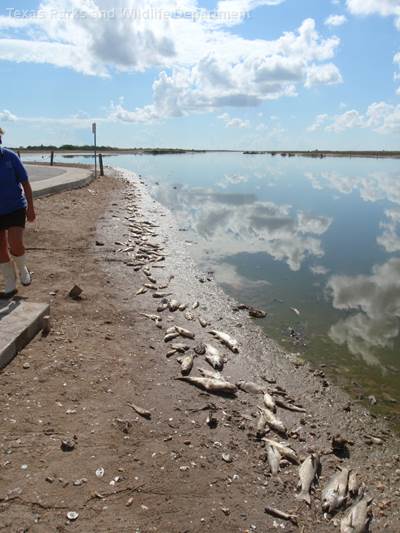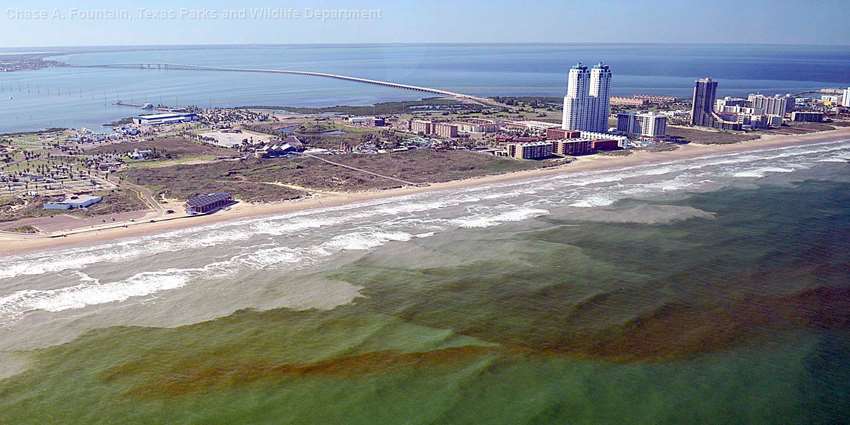Since the 1950s, the Texas Parks and Wildlife Department (TPWD) staff, referred to as the Kills and Spills Team, have responded to and investigated 9,345-reported pollution events and fish and wildlife kills in the state.
Fish kills result from predominately natural causes, according to the TPWD website. The most common cause is a low concentration of dissolved oxygen in the water causing fish to lose the ability to breathe.
“The low dissolved oxygen concentration happens for a lot of reasons,” said Jennifer Bronson Warren, TPWD regional biologist for Region 1. “Typically, there is more oxygen being consumed by plant and aquatic organisms than the water is either able to hold or is being produced.”
According to the TPWD website, other natural causes of fish kills include extreme weather, bacterial/viral diseases, parasitic infections and harmful algal blooms. Infections and diseases tend to only affect a single species while a lack of oxygen, extreme weather or harmful algal blooms will affect all species present.
A normal algal bloom in water can become harmful to fish very quickly due to such factors as an increase in nutrients, change in temperature, quality of water or amount of sunlight. Two well-known types of harmful alga are red tide and golden alga.
“Red tide is an alga that blooms in large numbers that colors the water red and when the cells die they release an aerosol that can be irritating to humans and fish alike,” Bronson Warren said. There is no evidence of golden alga threaten humans.
This year, the team in the coastal regions of the state has been responding to a large red tide event spreading from Matagorda Bay down to South Padre Island, she said.

According to Bronson Warren, human activities, such as vehicle accidents, water and oil pipeline breaks and wastewater treatment plant malfunctions, can also cause fish kills. She said there are things that humans can do to prevent kills or spills.
“You can make sure that you don’t put things down storm drains or flush things that could cause lines or storm sewers to clog, therefore helping to prevent overflow,” she said. Any toxic release into the water can easily spread and cause harm to the wildlife and aquatic organisms living under the water’s surface.
According to the website, kills and spills require a prompt response and accurate analysis to find the source and correct it if possible.
“First make sure it is safe; don’t hang around if there is a strong odor.” Bronson Warren said. “Note if there are any fish, if there is a smell, any unusual water color, if there is foam and location of spill.”
TPWD should be contacted immediately if a kill or spill is spotted by calling one of the two 24-hour communication centers at 512-389-4848 or 281- 842-8100. For guidelines on how to report a kill or a spill, visit the TPWD Kills and Spills website.

